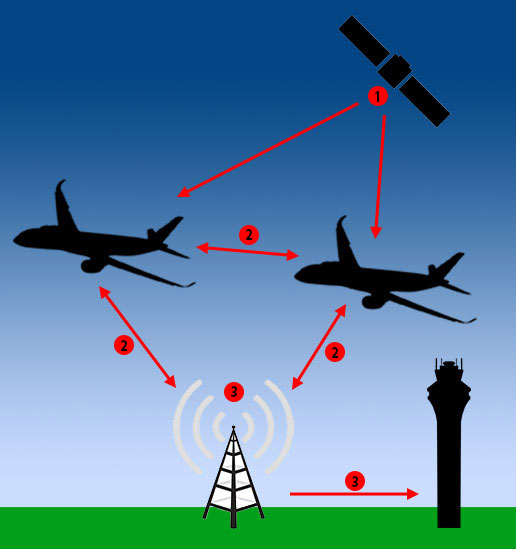
It seems the Federal Aviation Administration (FAA) finally reached a breaking point with requests to access restricted airspace.
Currently, it can take up to 90-days for an operator to get authorization to navigate controlled airspace. With more and more authorization requests pouring in, the logjam continues to get worse.
As such, the speculation is that some operators decide not to wait and fly without authorization. This may explain the increase in the number of non-compliant operations, as reported by the FAA. It is estimated that there are over 250 drone-related safety reports each month.
Access to restricted airspace
Under
14 CFR 107.41, “no person may operate a small unmanned aircraft in Class B, Class C, or Class D airspace or within the lateral boundaries of the surface area of Class E airspace designated for an airport unless that person has prior authorization from Air Traffic Control (ATC).”
Since Part 107 launched, the FAA has received an extremely high volume of airspace authorization requests from UAS operations. From September 2016 to July 2017 the Agency received 20,566 authorization requests. Of these, the Agency processed 14,334.
At any given time, there are up to 6,000 authorizations in the processing queue. Additionally, the number of requests continue to increase. The FAA expects the queue will exceed 25,000 pending authorizations within the next 6 months.
Ongoing efforts by the FAA
The solution? Fast-track the electronic authorization of drone flights. The groundwork for this eventuality has been a work-in-progress for the FAA.
The first step came when the FAA implemented Part 107 in August 2016.
This year, the FAA – in collaboration with airport tower staff – developed and published a series of grids. These grids depict the maximum safe and permissible altitude for unmanned aircraft operations. The FAA published these maps online.
The maps serve as the foundation for the Low Altitude Authorization and Notification Capability (LAANC) system. The goal is for LAANC to provide a quick and efficient response to airspace authorization requests.
Real-time authorizations with LAANC?
When operational, the FAA believes LAANC will help the agency grant “near-real time" authorizations for the vast majority of operations. The FAA states that remote pilots certified under part 107, who submit requests that comport with the published limitations, can expect almost real-time, electronic approval.
The system is also vital to the safety of National Airspace. The FAA expects LAANC to reduce “non-compliant” operations by at least 30 percent. Plus, once operational, it reduces distraction of controllers working in the Tower.
The FAA’s recent request seeks to accelerate the implementation of LAANC, which was to take until the end of the year.
“Due to the pressing safety consideration of reducing safety reports due to non-compliant UAS operations, the FAA cannot wait the normal 90 days of public comment,” the agency stated in the Federal Register notice Oct. 11. “Therefore, FAA is requesting Office of Management and Budget's (OMB) approval of this collection of information 7 days after publication of this Notice in the Federal Register. Upon OMB approval of its Emergency clearance request, FAA will follow the normal clearance procedures for the information collection associated with LAANC.”
 At the request of U.S. national security and law enforcement agencies, the Federal Aviation Administration (FAA) is using its existing authority under Title 14 of the Code of Federal Regulations § 99.7 – “Special Security Instructions” – to address concerns about unauthorized drone operations over seven Department of Energy (DOE) facilities.
The FAA and DOE have agreed to restrict drone flights up to 400 feet within the lateral boundaries of these sites:
At the request of U.S. national security and law enforcement agencies, the Federal Aviation Administration (FAA) is using its existing authority under Title 14 of the Code of Federal Regulations § 99.7 – “Special Security Instructions” – to address concerns about unauthorized drone operations over seven Department of Energy (DOE) facilities.
The FAA and DOE have agreed to restrict drone flights up to 400 feet within the lateral boundaries of these sites:

 It seems the Federal Aviation Administration (FAA) finally reached a breaking point with requests to access restricted airspace.
Currently, it can take up to 90-days for an operator to get authorization to navigate controlled airspace. With more and more authorization requests pouring in, the logjam continues to get worse.
As such, the speculation is that some operators decide not to wait and fly without authorization. This may explain the increase in the number of non-compliant operations, as reported by the FAA. It is estimated that there are over 250 drone-related safety reports each month.
It seems the Federal Aviation Administration (FAA) finally reached a breaking point with requests to access restricted airspace.
Currently, it can take up to 90-days for an operator to get authorization to navigate controlled airspace. With more and more authorization requests pouring in, the logjam continues to get worse.
As such, the speculation is that some operators decide not to wait and fly without authorization. This may explain the increase in the number of non-compliant operations, as reported by the FAA. It is estimated that there are over 250 drone-related safety reports each month.
 Recently, U.S. national security and law enforcement agencies made a request of the Federal Aviation Administration (FAA).
The request? They asked the FAA to use its existing authority to address unauthorized drone operations over Department of Interior (DOI) sites.
The FAA's authority comes from Title 14 of the existing Code of Federal Regulations (14 CFR)
Recently, U.S. national security and law enforcement agencies made a request of the Federal Aviation Administration (FAA).
The request? They asked the FAA to use its existing authority to address unauthorized drone operations over Department of Interior (DOI) sites.
The FAA's authority comes from Title 14 of the existing Code of Federal Regulations (14 CFR)  January 30, 2017 - uAvionix Corporation based in Palo Alto, California continues to innovate within the ADS-B transceiver market.
Today, uAvionix announced the development and test of a dime-sized transceiver weighing less than 1 gram.
UAvionix worked under a Collaborative Research and Development Agreement with the FAA and other partners to test this prototype.
January 30, 2017 - uAvionix Corporation based in Palo Alto, California continues to innovate within the ADS-B transceiver market.
Today, uAvionix announced the development and test of a dime-sized transceiver weighing less than 1 gram.
UAvionix worked under a Collaborative Research and Development Agreement with the FAA and other partners to test this prototype.
 December 19, 2016 – With all the new FAA regulations taking affect, many drone operators – professionals and hobbyists, alike – are asking a very important question: “Where can I fly my drone legally?”
As you know, the FAA has rules defining where and when commercial operators and hobbyists can fly legally. The rules, of course, differ for each group.
To provide clarity, the FAA developed the B4UFLY app to help operators quickly determine where they can fly legally. The app is offered for both iOS and Android systems.
December 19, 2016 – With all the new FAA regulations taking affect, many drone operators – professionals and hobbyists, alike – are asking a very important question: “Where can I fly my drone legally?”
As you know, the FAA has rules defining where and when commercial operators and hobbyists can fly legally. The rules, of course, differ for each group.
To provide clarity, the FAA developed the B4UFLY app to help operators quickly determine where they can fly legally. The app is offered for both iOS and Android systems.
 What exactly is ADS-B and do I need it?
What exactly is ADS-B and do I need it? 1. GPS satellites provide location information to ADS-B equipped aircraft.
2. ADS-B equipped aircraft transmit altitude, speed and velocity information to other ADS-B equipped aircraft and ADS-B ground stations.
3. ADS-B ground receive stations provide aircraft location back to other aircraft, as well as air traffic control centers.
"ADS-B In" systems can be installed on any aircraft to display location information of other aircraft with ADS-B Out transmitters.
Aircraft also transmit their location directly to other “ADS-B In” equipped aircraft within their transmit area. Thus, forming a long-range mesh network that shares real-time position information.
For pilots flying with Visual Flight Rules cockpit-based ADS-B receiver displays provide earlier warning of aircraft in their flight area. This helps improve safety during inclement weather conditions.
1. GPS satellites provide location information to ADS-B equipped aircraft.
2. ADS-B equipped aircraft transmit altitude, speed and velocity information to other ADS-B equipped aircraft and ADS-B ground stations.
3. ADS-B ground receive stations provide aircraft location back to other aircraft, as well as air traffic control centers.
"ADS-B In" systems can be installed on any aircraft to display location information of other aircraft with ADS-B Out transmitters.
Aircraft also transmit their location directly to other “ADS-B In” equipped aircraft within their transmit area. Thus, forming a long-range mesh network that shares real-time position information.
For pilots flying with Visual Flight Rules cockpit-based ADS-B receiver displays provide earlier warning of aircraft in their flight area. This helps improve safety during inclement weather conditions.
